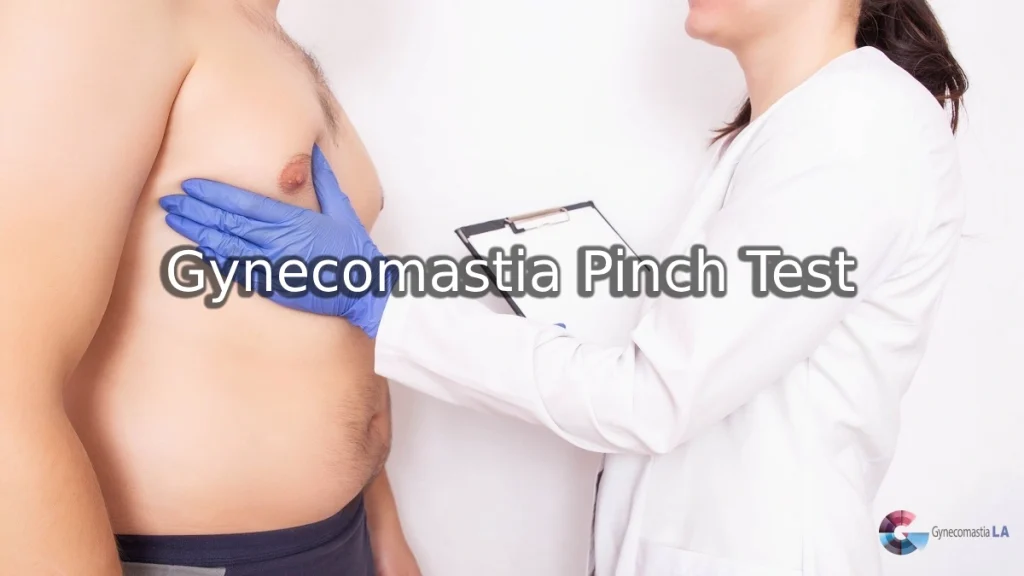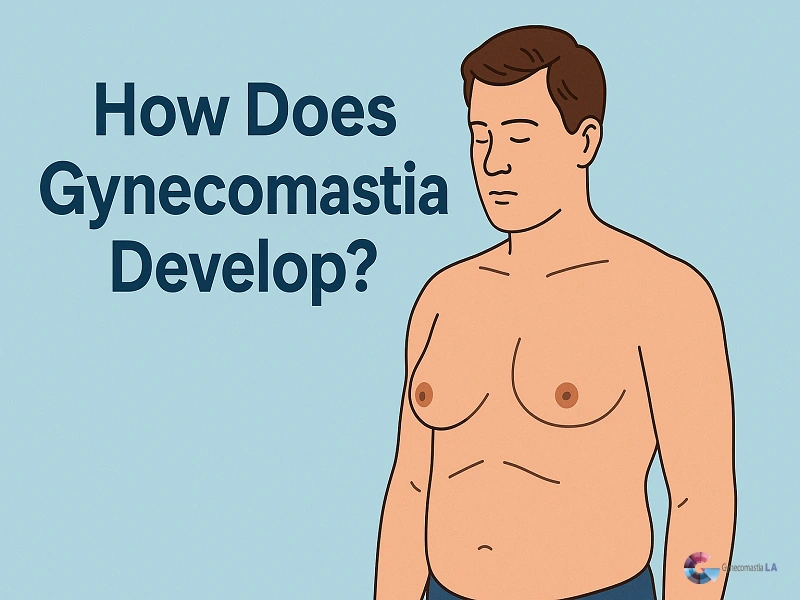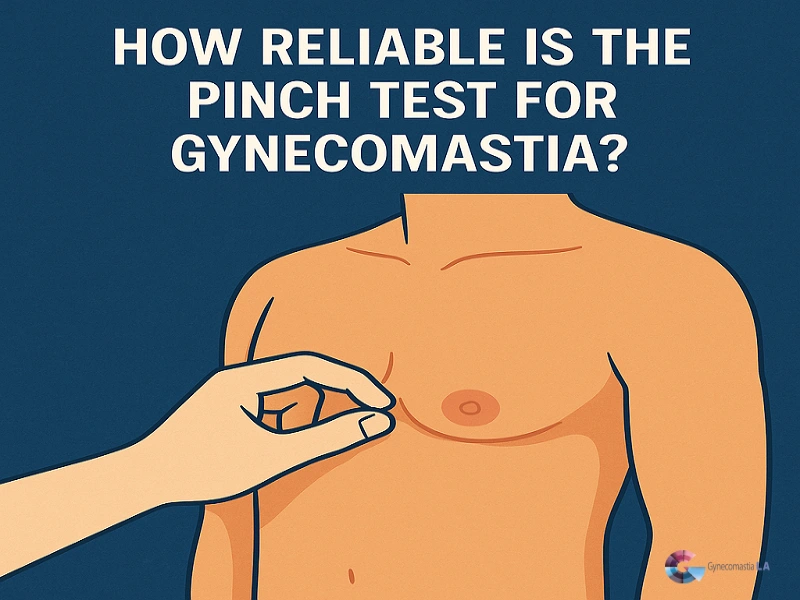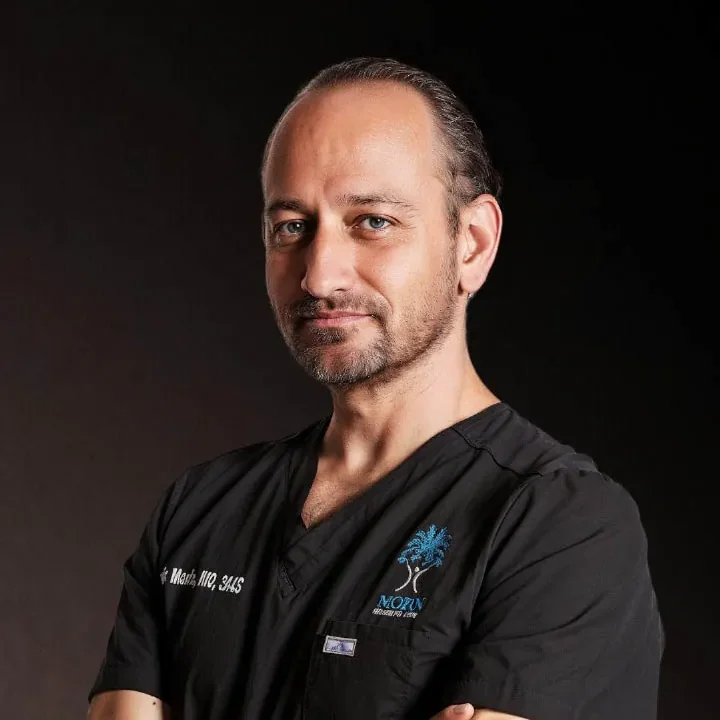Table of Contents
Have you ever looked in the mirror and wondered, “Is this just chest fat or something else?”
You’re not alone. A lot of men silently worry about changes in their chest area, especially when it begins to feel fuller or rounder. The good news? There’s a simple first step to figuring it out: the gynecomastia pinch test.
This isn’t a fancy scan or blood test; it’s something you can try at home (carefully). In this guide, we’ll walk you through everything you need to know about the pinch test, how to do it, what it means, and what to do next.

Table of Contents
What is the Gynecomastia Pinch Test?
The gynecomastia pinch test is a straightforward technique that men can employ to assess the presence of glandular breast tissue growth, commonly known as gynecomastia. This condition is characterized by an enlargement of breast tissue in males, which can sometimes lead to discomfort or self-esteem issues.
To perform this test, you’ll want to gently pinch the area around your nipple using your fingers to palpate the underlying tissue. The focus on the nipple region is essential, as this is typically where glandular tissue develops, rather than excess fat, which tends to accumulate in other areas of the chest.
Why Do Men Develop Gynecomastia?

There are many reasons, but it usually comes down to hormone imbalance much estrogen (a female hormone) or too little testosterone.
Common causes include:
- Puberty
- Aging
- Certain medications that may cause gyno (like steroids or anti-depressants)
- Liver or kidney conditions
- Marijuana or alcohol use
It’s important to understand the cause because that guides the treatment.
How to Perform the Gynecomastia Pinch Test at Home
Here’s how to try the pinch test yourself:
- Stand in front of a mirror with your shirt off.
- Relax your arms and let them hang naturally.
- With one hand, use your thumb and index finger to gently pinch around the nipple.
- Feel beneath the areola (the dark area around your nipple).
- Check for:
- A firm, rubbery mass directly beneath the nipple
- Symmetry (one or both sides may be affected)
Tip: If it hurts when you press or the mass feels tender, that can also be a sign of gynecomastia.
What Does Gynecomastia Feel Like?
It usually feels like:
- A small marble or rubbery disk
- Located under the nipple
- Slightly tender or sensitive
Fat, on the other hand, feels soft, squishy, and not concentrated in one spot.
Think of it this way:
Fat feels like mashed potatoes. Gynecomastia feels like a grape.
Here’s the fundamental approach:
If you detect a firm, rubbery disk-like mass located directly beneath the nipple, it may indicate the presence of gynecomastia. This tissue is generally compact and can feel distinctively different from surrounding areas.
- Conversely, if the tissue feels softer and has a more diffuse, spread-out quality across the chest, it is more likely to be fatty tissue, which is a normal variation in body composition rather than a sign of gynecomastia.
Understanding these differences can help in identifying whether there may be a need for further evaluation or consultation with a healthcare professional regarding any concerns about breast tissue changes.
| Feature | Chest Fat (Pseudogynecomastia) | Gynecomastia |
|---|---|---|
| Cause | Excess fat accumulation in the chest area | Hormonal imbalance causing glandular breast tissue growth |
| Tissue Type | Fatty tissue only | Glandular and possibly some fat tissue |
| Feel on Touch | Soft and squishy | Firm or rubbery under the nipple |
| Appearance | Even fat distribution, often bilateral | Concentrated swelling beneath the nipple area |
| Hormonal Involvement | Not typically hormone-related | Strongly associated with hormone changes (estrogen/testosterone imbalance) |
| Response to Weight Loss | Often reduces with diet and exercise | Usually persists despite weight loss |
| Treatment | Diet, exercise, and weight loss | Surgical removal of glandular tissue (gynecomastia surgery) |
| Pain or Tenderness | Generally painless | May be tender or painful |
How Reliable is the Pinch Test?

The pinch test is a good starting point, but it’s not 100% reliable.
Some men with chest fat may mistake firmness for glandular tissue. Others with early-stage gynecomastia might not feel much at all.
It’s helpful, but don’t make medical decisions based on it alone.
Medical Diagnosis vs. Self-Test
Doctors don’t just rely on the pinch test. They may use:
- A physical exam
- Hormone tests
- Ultrasound or mammogram
- Review of your medications and lifestyle
A professional diagnosis helps you understand the why behind your symptoms.
Why the Pinch Test Alone Isn’t Enough
Imagine using a flashlight to inspect a car engine helps, but it won’t give you the full picture.
That’s what the pinch test is like: a tool, not a diagnosis.
You can feel something, but you can’t always know:
- How big the gland is
- If it’s a hormone issue
- If there’s scar tissue or fluid
Always pair it with medical insight.
When to See a Doctor
If you:
- Feel a firm mass
- Experience pain or nipple discharge
- Notice swelling that doesn’t go away
- Feel embarrassed or uncomfortable
…it’s time to consult a doctor. Early evaluation helps rule out rare causes like tumors or infections.
How Surgeons Confirm Gynecomastia
During a consultation, surgeons check:
- The consistency of the tissue
- Symmetry between sides
- Skin elasticity and fat volume
They may also recommend blood tests or imaging to understand the deeper cause.
Surgery typically removes glandular tissue and shapes the chest with or without liposuction.
Final Thoughts on Gynecomastia Pinch Test and Next Steps
The gynecomastia pinch test can be a helpful first step in understanding changes in your chest, but it’s not the full answer. If you’re feeling unsure, uncomfortable, or frustrated by the way your chest looks or feels, don’t wait or guess. You deserve answers from a medical expert.
At Gynecomastia LA, we specialize in helping men just like you regain confidence with proven solutions. Led by Dr. Babak Moein, a board-certified surgeon with extensive experience in male breast reduction, we offer personalized consultations, advanced diagnostic tools, and minimally invasive surgical treatments tailored to your body and goals.
Whether you’re dealing with true glandular gynecomastia, stubborn chest fat, or both, Dr. Moein will provide a clear plan for moving forward with honesty, compassion, and results.
📞 Call us today at 310-861-3799
📝 Or fill out our quick Contact Form to schedule your confidential consultation with Dr. Moein.
We proudly serve patients across Los Angeles, Beverly Hills, and Southern California, offering world-class care in a discreet, supportive environment.

Dr.Babak Moeinolmolki
LA Cosmetic Surgeon Dr. Moein is board-certified by the American Board of General Surgery.

